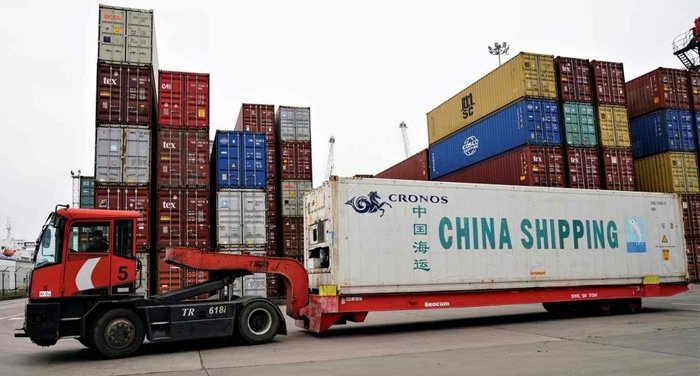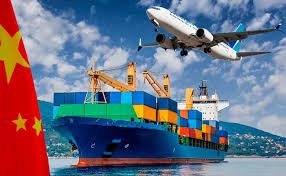
Introduction – Why a Strategic Approach to China Shipping Matters
Over the past two decades, China has evolved into the world’s largest manufacturing hub, exporting everything from consumer electronics and apparel to industrial machinery. While the production advantages are clear, the logistics side of the equation remains complex.
Importers who approach shipping as a simple “book a container” task often face delays, unexpected charges, or even customs penalties. Successful global brands treat shipping from China as a strategic process—factoring in transportation modes, cost structures, compliance, packaging, and supply chain coordination.
At Shenzhen Guanwutong International Freight Forwarding Co., Ltd., we see daily how informed planning transforms outcomes: cutting costs, reducing lead times, and ensuring goods arrive exactly as expected.
Understanding the True Cost Structure
Many first-time importers underestimate the total cost of shipping from China. Freight rates are just one component—often less than 60% of the final bill.
Key cost elements include:
- Main Freight Charges – Sea, air, rail, or courier rates.
- Inland Haulage – Transport from factory to port or airport within China and from destination port to final delivery.
- Customs Duties and Taxes – Based on HS codes, declared value, and local tariff policies.
- Documentation & Administration Fees – Charges for paperwork, compliance checks, and government filings.
- Insurance – Optional but crucial for high-value or fragile shipments.
Case in point: One client importing electronics to Europe found that choosing ぶんさんデータしょり (Delivered Duty Paid) with Guanwutong reduced unexpected local fees by 18%, compared to booking “freight only” through a carrier.
Choosing the Right Transport Mode – Balancing Speed and Cost

Selecting the wrong mode of transport can erode profit margins or cause missed delivery deadlines.
| モード | Pros | Cons | Best Use Case |
| 海上貨物 (FCL) | Lowest cost per unit, secure for bulk cargo | Slower, subject to port congestion | Large orders >14 CBM, non-urgent |
| 海上貨物(LCL) | Cost-effective for small loads | Longer transit, handling delays | Orders <14 CBM |
| 航空貨物 | Fast, secure for high-value goods | High cost | Urgent goods, perishable or seasonal |
| Courier/Express | ドア・ツー・ドア speed, tracking | Highest per kg cost | Small parcels, e-commerce |
| 鉄道貨物 | Balanced cost/speed for inland Asia/Europe | Limited coverage | Cross-border inland cities |
Guanwutong’s advantage: We design hybrid solutions—such as sea freight to a hub port followed by express trucking—to meet tight deadlines without incurring full air freight costs.
The Time Factor – Seasonality and Market Dynamics
Transit time is not just a number on a rate sheet. Several factors influence it:
- Peak Seasons: Chinese New Year, Golden Week, and pre-Christmas rush often cause capacity shortages and rate surges.
- Port Congestion: Delays in loading/unloading, especially at major hubs like Shanghai and Shenzhen.
- Weather Conditions: Typhoons in Southeast Asia can disrupt schedules.
Recommendation: Book space early during peak seasons and consider alternative ports or routes. For example, shipping from Ningbo instead of Shanghai reduced one client’s lead time by 5 days.
Supplier Coordination – The Foundation of On-Time Shipping
Efficient logistics starts before cargo leaves the factory. A proactive freight forwarder will:
- Verify that goods match destination compliance requirements.
- Ensure packaging meets both transport safety and import labeling rules.
- Schedule pickups in alignment with vessel or flight schedules.
At Guanwutong, we provide pre-shipment inspections そして cargo consolidation in Shenzhen and Ningbo, which helps clients avoid split shipments and unnecessary multiple customs entries.
Compliance and Risk Management – Avoiding Costly Mistakes
Regulatory compliance is non-negotiable. Failure to meet destination requirements can lead to shipment seizures, fines, or returns.
Key considerations:
- Certification Requirements: CE, FCC, FDA, RoHS, etc.
- Restricted Goods: Items requiring special licenses or permits.
- Accurate HS Codes: Prevents incorrect duty rates or customs holds.
By integrating customs brokerage into our freight services, Guanwutong ensures that all paperwork is correct before cargo is shipped—preventing clearance delays that can damage client relationships.
The Role of Incoterms – Defining Responsibility and Cost
Incoterms define who pays for what and where risk transfers. Common terms for China shipments include:
- EXW (Ex Works): Buyer assumes responsibility from the factory door.
- FOB (Free On Board): Seller covers delivery to port and export clearance; buyer covers main freight and beyond.
- DDP (Delivered Duty Paid): Seller or freight forwarder covers the entire chain, including duties and taxes.
For small businesses or those new to importing, DDP is often the safest choice—Guanwutong’s DDP service bundles all costs for a clear, final landed price.
Packaging and Cargo Protection – More Than Just Boxes
Improper packaging is a leading cause of in-transit losses. We recommend:
- Using export-grade cartons and wooden pallets.
- Vacuum sealing for moisture-sensitive goods.
- Corner protectors for fragile items.
- “Do Not Stack” labels when needed.
We also offer marine cargo insurance to cover damage, theft, or loss during transit.
Documentation – The Paperwork That Keeps Cargo Moving
Essential documents include:
- Commercial Invoice – Detailed product description, HS code, value.
- Packing List – Weight, dimensions, package count.
- Bill of Lading / Air Waybill – Transport contract and receipt.
- Certificates – As required by product category or destination.
Even small errors can result in customs holds—our team double-checks all paperwork for accuracy.
Practical Tips to Reduce Shipping Costs
- Ship during off-peak seasons to avoid surcharges.
- Consolidate cargo to achieve volume discounts.
- Use efficient packaging to minimize dimensional weight for air freight.
- Plan shipments in advance to secure better rates.
- Work with a forwarder who offers multiple mode options for flexibility.
Why Work with Shenzhen Guanwutong International Freight Forwarding Co., Ltd.?
- Global Network – Direct partnerships with major carriers and agents worldwide.
- One-Stop Service – From pickup and consolidation to customs and delivery.
- カスタムソリューション – Tailored routing and mode selection based on cost, speed, and cargo type.
- Proven Reliability – Consistent on-time delivery and transparent pricing.
Conclusion – Turning Logistics into a Competitive Advantage
Shipping from China is not just a logistical task—it’s a strategic function that can impact profitability, customer satisfaction, and business growth. By mastering cost structures, choosing the right mode, ensuring compliance, and partnering with an experienced freight forwarder like Shenzhen Guanwutong, businesses can transform shipping from a cost center into a competitive advantage.


